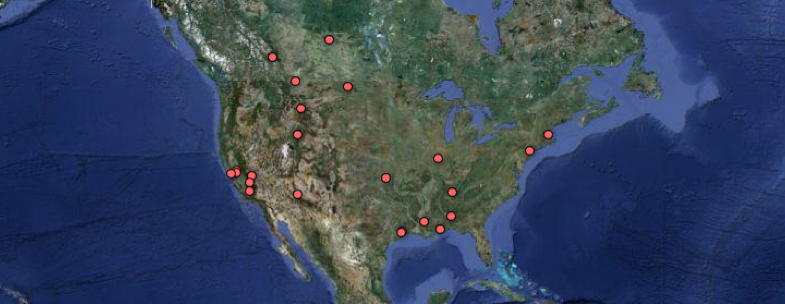At the southern tip of Australia, Berkeley Lab scientists are helping to verify that depleted natural gas reservoirs can be repurposed for use as geologic carbon sequestration sites.
In Mississippi, they’re exploring whether it’s possible to produce electricity from the Earth’s heat using CO2, as well as store some of the CO2 permanently underground.
Many other geologic carbon sequestration projects are underway around the world with the help of Berkeley Lab scientists. But where are they? Now, thanks to a searchable map on the Earth Science Division’s Geologic Carbon Sequestration Program website, you can check out all of the past, present, and planned geologic carbon sequestration projects that Berkeley Lab scientists are involved in around the globe. They span every continent except Antarctica, with a big concentration in the U.S.
Geologic carbon sequestration holds promise to help mitigate climate change by capturing CO2 from major sources, such as coal-burning power plants, and injecting it deep underground for permanent storage. The technology is being developed because fossil fuels will likely remain cheap and plentiful for decades to come, even as renewable energy sources continue to improve. More research is needed before the widespread use of the technology, however, which is why Berkeley Lab and many other institutions are carrying out field-scale tests.
Berkeley Lab scientists have been conducting research on geologic carbon sequestration since 1998. The Geologic Carbon Sequestration Program within the division, established in 2007, is tasked with furthering the understanding of CO2 injection, storage, migration processes, impacts, and monitoring. The program’s goal is to inform and guide the safe and effective implementation of geologic carbon sequestration.
The map was develop by Earth Science Division’s Helen Prieto, Sam Wright, and Curt Oldenburg, who is the head of the division’s Geologic Carbon Sequestration Program.
